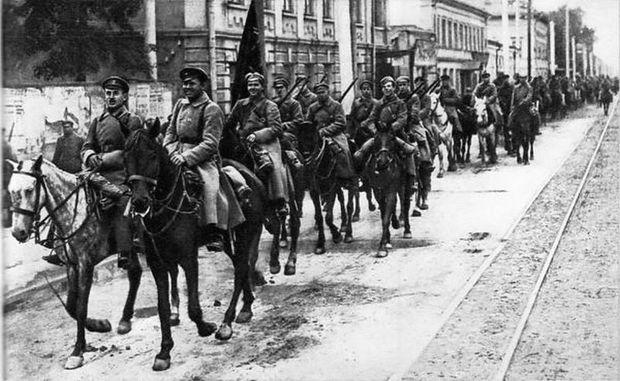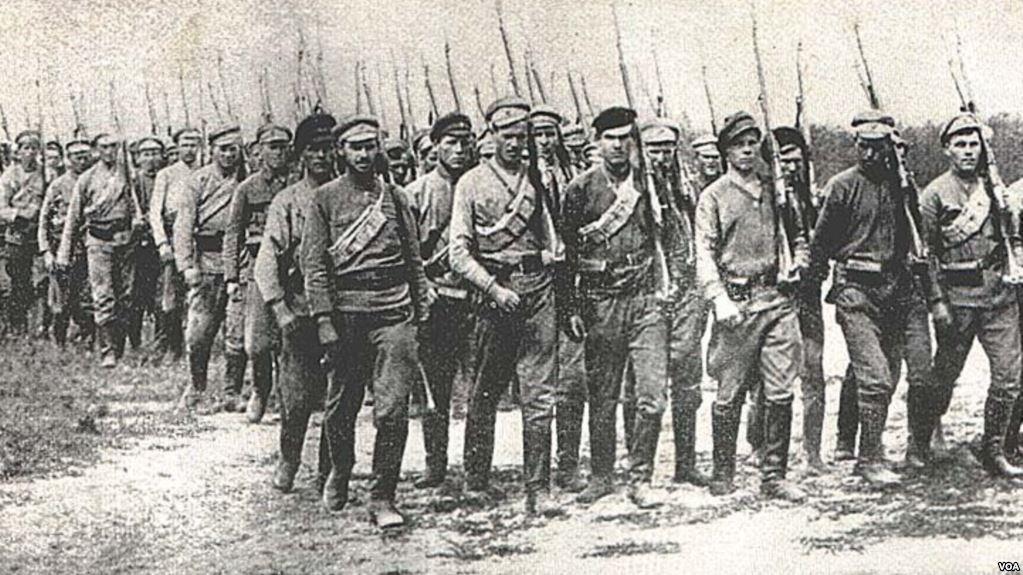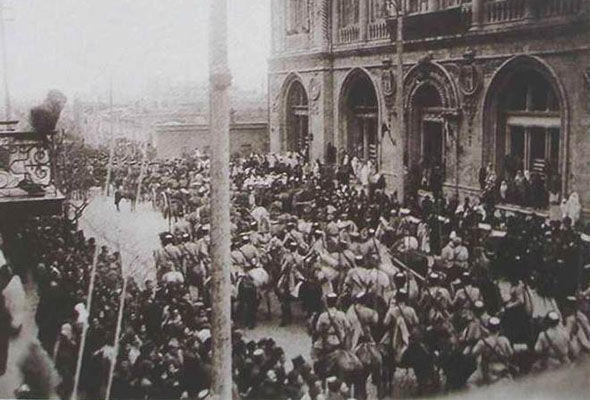100 years pass since fall of Azerbaijan Democratic Republic, Soviet occupation [PHOTO]
![100 years pass since fall of Azerbaijan Democratic Republic, Soviet occupation [PHOTO]](https://www.azernews.az/media/2020/04/28/azerbaijan_parlament.jpg)
By Akbar Mammadov
Today marks 100 years since the occupation of Azerbaijan by Soviet Russia and the fall of the Azerbaijan Democratic Republic (ADR) that was the first secular, democratic state in the Muslim East.
On 27 April 1920, the XI Red Army of the Soviet Russia entered the territory of the Azerbaijan Democratic Republic, and the head of Soviet Russia, Vladimir Ilyich Lenin, established the Azerbaijan Provisional Military Revolutionary Committee in Moscow under the chairmanship of Nariman Narimanov, Deputy People's Commissar in the Commissariat of National Affairs of Soviet Russia. To avoid massive bloodshed, the deputies complied with the demand and the ADR officially ceased to exist on April 28, 1920, giving way to the Azerbaijan Soviet Socialist Republic (Azerbaijan SSR) as its successor state, but the Soviet Russia had have completely different plans about ASSR.
Historical and political conditions before Soviet occupation
Moscow's intention to regain control of the vitally necessary region was strong and coherent, and on its way the Soviet government was ready to accept any concession.
In 1918 and 1919 Soviet Russia rejected all attempts made by the ADR to establish diplomatic relations between the two. 1920 was marked by a diplomatic dispatch which started with a radiogram sent by Minister of Foreign Affairs Georgy Chicherin, which said: “The government of the Russian Socialist Federative Republic reverts to Azerbaijan with an initiative to immediately launch talks with the Soviet government aiming at acceleration and finishing of the White army bodies in the South of Russia”.
In his response, Fatali Khan Khoyski, the head of the Azerbaijan government, insisted on non-interference in the internal affairs of the country. However, the Soviets considered this position as support rendered by Azerbaijan to the White army.
Yalama battle and arrival of Soviet army to Baku
On 27 April, a deadly battle took place between 350 Azerbaijani soldiers under the command of Agali Babazadeh, an officer of the Guba Regiment of the Azerbaijani National Army, including a group of volunteers led by Hamdulla Efendi and the Soviet Army of 70,000 soldiers at the Yalama station. After the beginning of a heavy battle, the positions of Azerbaijani artillerymen were destroyed by Soviet armored trains. The Russian paratroopers, backed by shrapnel and machine gun fire, attacked. The 350 fighters guarded the station until their last breath. The Russian paratroopers also suffered heavy losses in the battle. For example, one of the famous commanders of the XI Red Army, a veteran of the 28th division Nemikin also died in this battle.
On April 27, at 11 pm, Bilajari station was captured by Soviet armored trains, and at 4 am, the "III International" armored train arrived at Baku station. On April 30, the main units of the 11th Army entered the city. On the same day, units of the 7th Cavalry Division entered Shamakhi and Agsu, and on May 1, Soviet armored trains overcame the resistance of Azerbaijani units and captured Ganja station. On the same day, ships of the Volga-Caspian navy entered the port of Baku. On May 3 and 4, naval landings were launched in Lankaran and Astara, later, on May 5-7, cavalry units of the 11th Army entered Gazakh, and Yevlakh districts. In mid-May 920, the 11th Army took control of almost the entire territory of the Azerbaijan Democratic Republic. Thus, as a result of Russian intervention, the government of the national government of Azerbaijan was overthrown.
Consequences of the Soviet occupation
In May 1920, a major uprising against the occupying Russian XI Army in Ganja, with the intention to restore ADR in power, however, the uprising was crushed by the Soviet troops by May 31. Leaders of the ADR either fled to the Democratic Republic of Georgia, Turkey and Iran, or were captured by the Bolsheviks and executed, including Gen. Salimov, Gen. Sulkevich, Gen. Agalarov in Caspian islands such as Nargin: a total of over 20 generals including Fatali Khan Khoyski and Behbudagha Javanshir were assassinated by Armenian militants.
As result of the Soviet occupation, as many as 20,000 died resisting what was effectively a Russian reconquest. However, it has to be noted that the installation of the Azerbaijan Soviet Socialist Republic was made easier by the fact that there was a certain popular support for Bolshevik ideology in Azerbaijan, in particular among the industrial workers in Baku.
---
Akbar Mammadov is AzerNews’ staff journalist, follow him on Twitter: @AkbarMammadov97
Follow us on Twitter @AzerNewsAz
Here we are to serve you with news right now. It does not cost much, but worth your attention.
Choose to support open, independent, quality journalism and subscribe on a monthly basis.
By subscribing to our online newspaper, you can have full digital access to all news, analysis, and much more.
You can also follow AzerNEWS on Twitter @AzerNewsAz or Facebook @AzerNewsNewspaper
Thank you!



